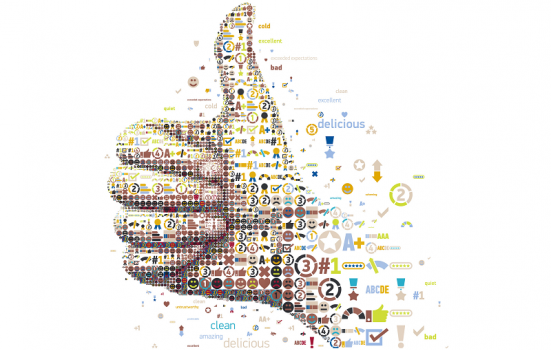A new data guide and digital toolkit are showing how digital technology can enhance an arts organisation’s core activity, make its content more accessible and drive new forms of revenue. Tim Plyming explains.

Charis Tsevis (CC BY-NC-ND 2.0)
The past few years have seen a huge increase in the amount of data being produced – from our social media footprint through to our online shopping activity – but also the many ways we use data to inform what we do and how we do it. Every sector in the UK needs to understand how to harness the power of data to improve products or offerings and this includes cultural organisations.
Many have been using data for some time to reach new audiences and develop deeper relationship with existing ones. Artists are now starting to use data as the basis of their practice, a current example being Thomson & Craighead’s residency with the Open Data Institute exploring ways in which our lives and experiences are mediated by technology.
Learning from these projects, as well as experts across the sector, we are keen to demystify data and open up its potential to even more organisations
Over the past three years, the Digital R&D Fund for the Arts (Nesta, Arts Council England and the Arts and Humanities Research Council) has been funding 52 projects to explore how digital technology can help arts organisations improve their core activity, make content more accessible and drive new forms of revenue. Learning from these projects, as well as experts across the sector, we are keen to demystify data and open up its potential to even more organisations. To do this, we have designed a data guide, available on the Fund’s website. Tips, tools and case studies demonstrate how data can benefit all kinds and sizes of arts organisation.
Organisations we have supported on their data journey include the Imperial War Museum. As part of the 2014 centenary commemorations of World War One, it partnered with Historypin and invited the public to help it curate the content in its First World War paintings collection. Using specially developed crowdsourcing tools, the public was able to view artworks, locate them on a map, add contextual information and their emotional responses and then contribute to online discussions. One of the lessons it learnt from the project was the relationship between online and offline participation, offering the potential to increase and sustain audience engagement across the sector.
The Audience Agency has also been busy developing a platform that brings together data sources from Barbican Arts Centre, English National Opera and the National Theatre. For six months data scientists-in-residence at each partner organisation explored and taught data-driven decision-making techniques using the platform. The project has delivered an ‘information sharing protocol’ helping to point to what data should be shared, with whom and the limitations on this sharing.
Each project’s findings will be published on the Digital R&D Fund for the Arts website over the course of the year.
Our data guide is accompanied by our new digital toolkit which guides users through digital product development, including building a business plan, communicating need with stakeholders and user testing. It covers a diverse range of techniques and suggestions, such as:
- Whys technique – A technique which helps explore the cause and effect of a particular or recurring problem. It can also be used to interrogate an idea or assumption that needs boiling down before making a decision.
- Business model canvas – A strategic tool which helps users describe, design and cost a proposed product, understand its value for an organisation and its audience. It also poses useful questions along the way such as “Is local economic impact more important as a benefit than generating direct revenues?”
- Performance dashboard – This enables users to test and iterate against objectives and create regular reports on progress for teams and stakeholders. On top of this framework can be layered other indicators which will help show whether a product is successful or not such as quality acceptance testing (QAT) criteria and user acceptance testing (UAT).
Findings are being shared across a range of themes including mobile, accessibility, digital distribution and business models, and form part of our overarching campaign, ‘Making Digital Work’.
Tim Plyming is Director of Digital Arts and Media at Nesta.
www.nesta.org.uk
This article is the first in a series of articles on the theme ‘Making digital work’ sponsored and contributed by the Digital R&D Fund for the Arts.




